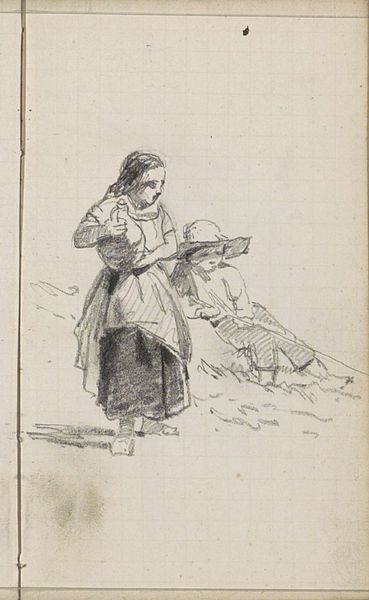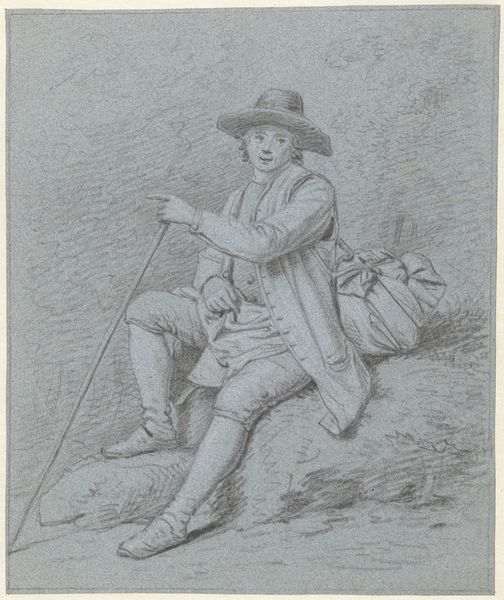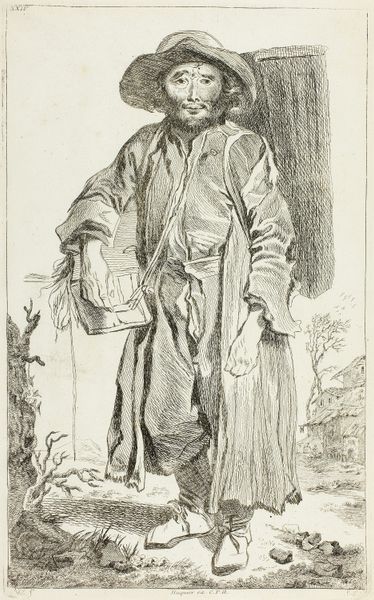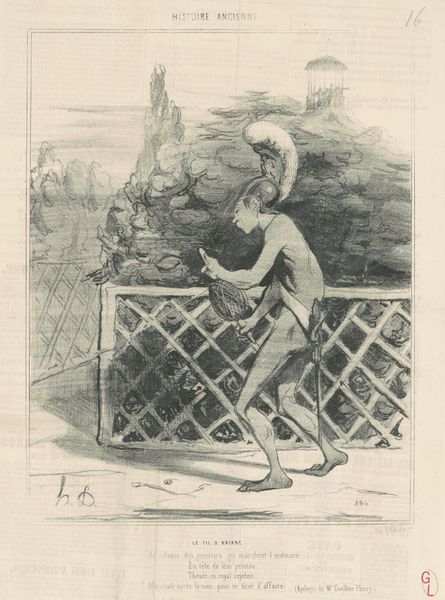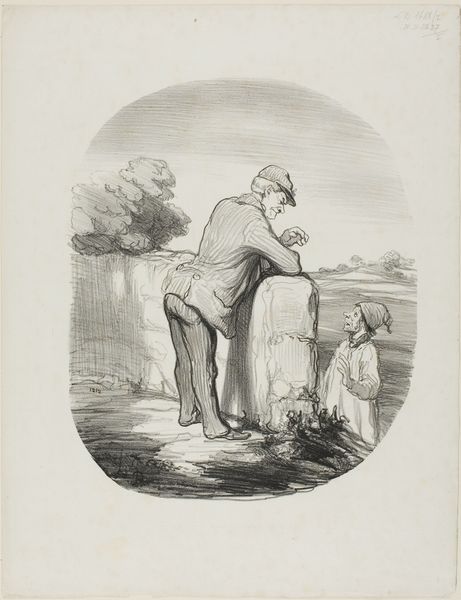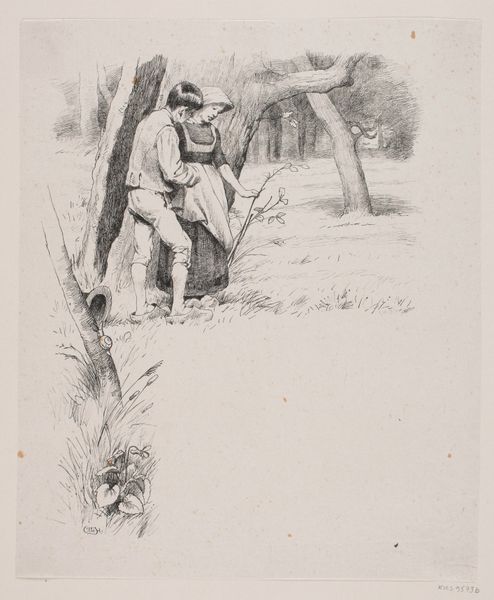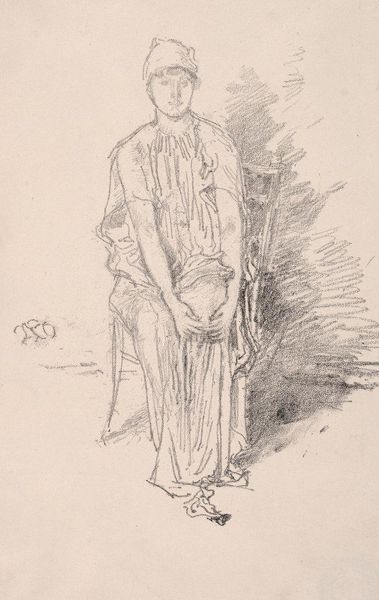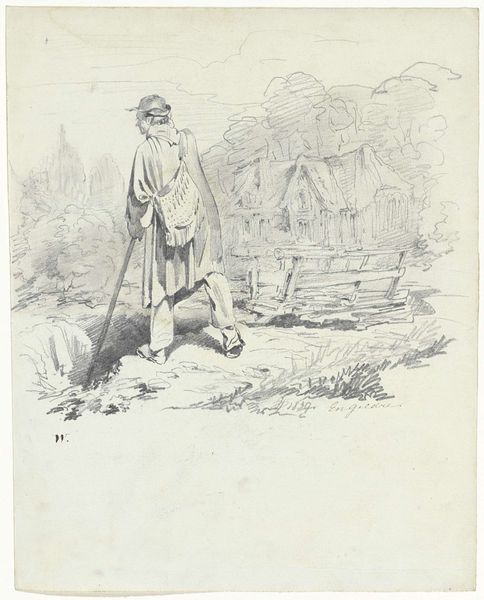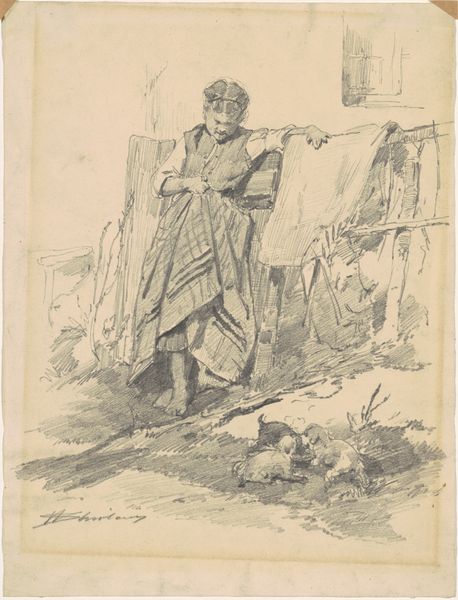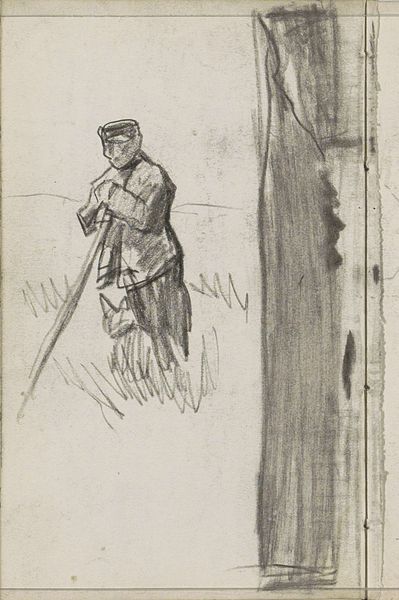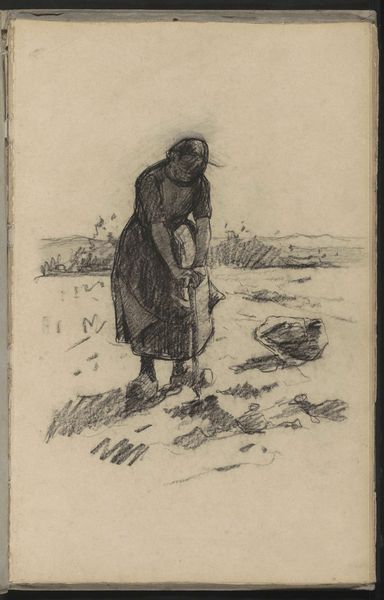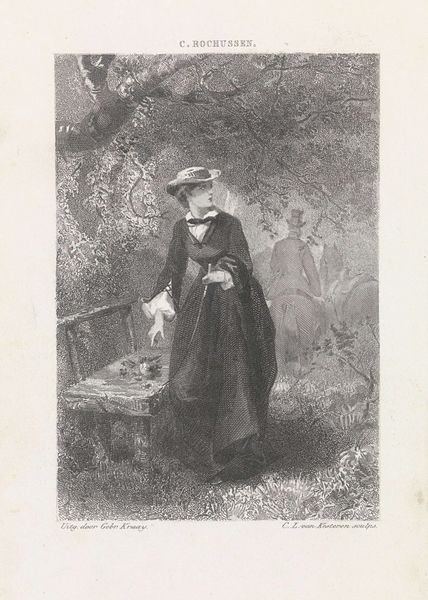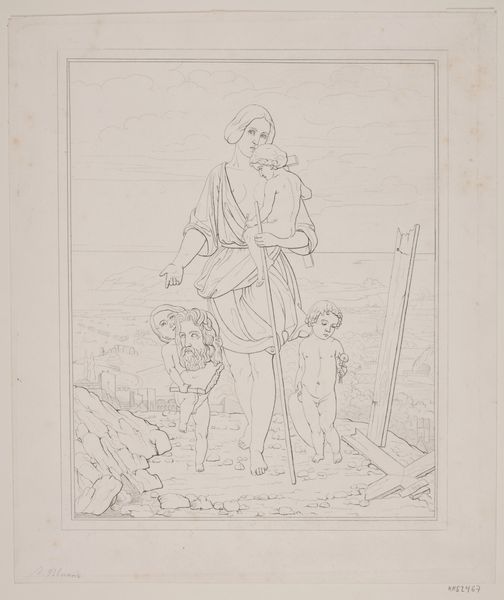
drawing, pencil
#
portrait
#
drawing
#
pen sketch
#
pencil sketch
#
landscape
#
romanticism
#
pencil
Dimensions: height 241 mm, width 182 mm
Copyright: Rijks Museum: Open Domain
Curator: Here we have "Standing Shepherd with his Dog, near a Fence," a drawing attributed to Simon Andreas Krausz, created sometime between 1770 and 1825. Editor: It has such an understated quality. It's quite subtle for a Romantic landscape; more like a half-remembered scene. The grey pencil and paper seem integral to that impression. Curator: The simplicity of the scene speaks volumes. The shepherd with his dog, both seemingly at rest near the enclosure… they represent a familiar allegorical connection to guidance and protection. The dog, especially, often appears in art as a symbol of loyalty and watchfulness. Editor: And Krausz used simple materials readily available. Pencil wasn't just a tool, but a means to capture fleeting observations quickly. It invites us to consider how the social position of art materials affects accessibility and creative production. Curator: Good point. Romanticism often romanticized the lives of common people, and what’s more ordinary than a shepherd and his dog? This image really distills the shepherd archetype down to its essentials: the staff, the animal companion, the humble attire. The very light suggestion of trees and landscape is a common shorthand too. Editor: Looking at how the fence is sketched—almost floating rather than anchored—highlights the artistic choices about production of imagery and meaning-making through seemingly modest work. Curator: That ethereal quality is so much of the aesthetic impact. I mean, this drawing evokes this sense of pastoral harmony that's…well, mostly aspirational, don't you think? It presents an idealised view of country life, rather than depicting the everyday realities of labour. Editor: Right. While seemingly straightforward, it challenges conventional ideas of artistry and subject matter within broader movements and trends. The rough marks offer up a certain unfinished charm, don’t you think? Curator: It truly invites reflection on these traditions. I feel it almost functions like an afterimage… Editor: It highlights how artistic merit might lie not in complexity or adornment, but instead in thoughtful process and understated symbolism.
Comments
No comments
Be the first to comment and join the conversation on the ultimate creative platform.
